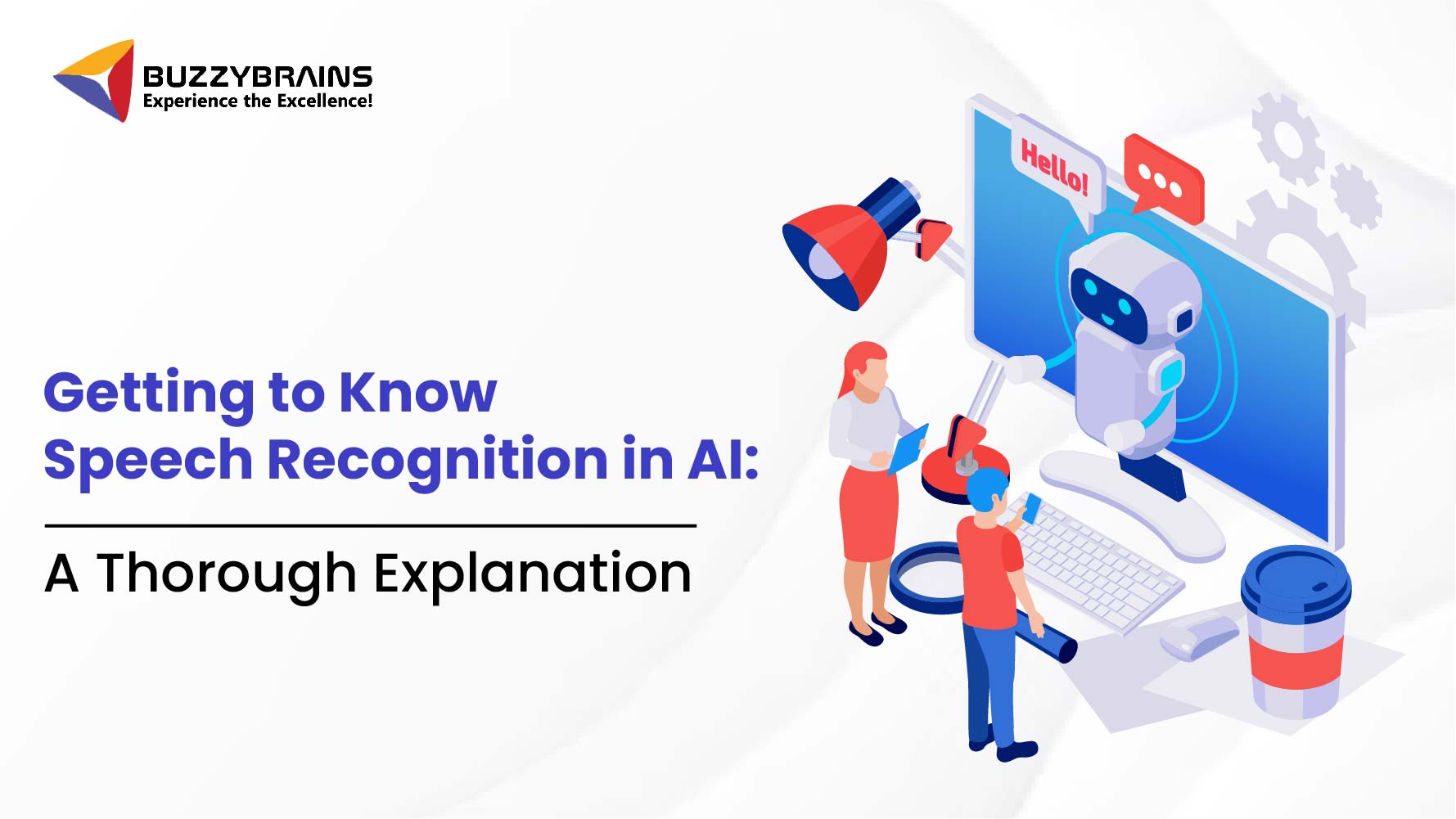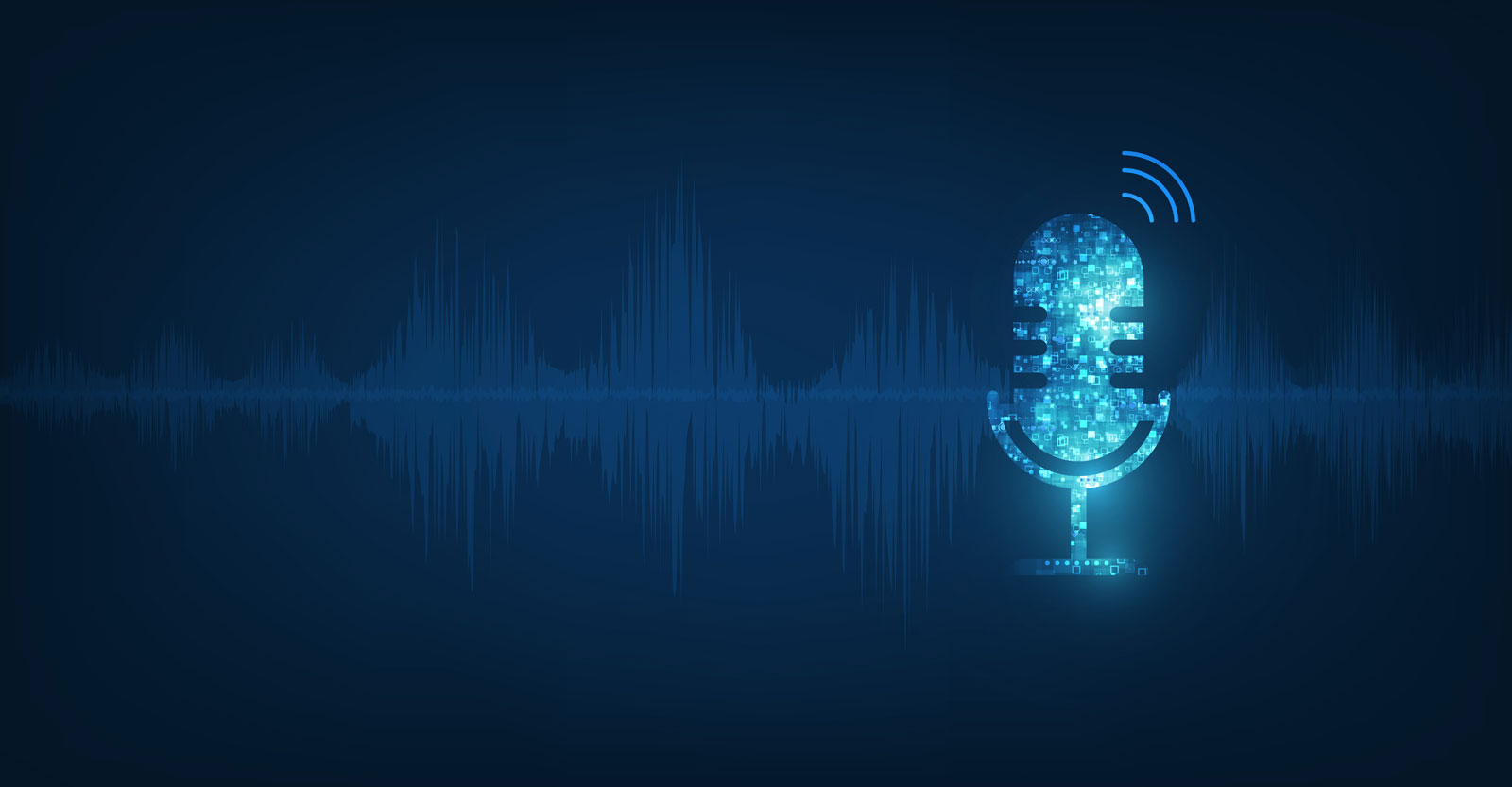Getting to Know Speech Recognition in AI: A Thorough Explanation

- What is Speech Recognition in AI?
- How Does Speech Recognition AI Work?
- Types of Speech Recognition Systems
- Key Features of Speech Recognition Systems
- Applications and Use Cases of Speech Recognition AI
- Advantages of Speech Recognition
- Challenges in Implementing Speech Recognition AI Systems
- FAQs about Speech Recognition in AI
- Conclusion
- Embrace AI App Development with BuzzyBrains today!
What is Speech Recognition in AI?
When it comes to artificial intelligence, Speech Recognition stands as a pivotal technology, empowering machines to comprehend and interpret spoken language. This groundbreaking innovation involves the conversion of spoken words into written text, ushering in a new era where computers can not only hear but understand human speech. From healthcare to customer service and beyond, the applications of Speech Recognition are reshaping industries.
The amalgamation of sophisticated algorithms, machine learning, and neural networks propels the advancements in Speech Recognition. In this blog, we’ll unravel the intricacies of Speech Recognition in AI, exploring its workings, types, key features, applications, advantages, challenges, and the future trends shaping this cutting-edge technology.
How Does Speech Recognition AI Work?
Speech Recognition AI relies on intricate algorithms that dissect audio signals to identify and comprehend spoken words. This process involves capturing audio input, pre-processing for clarity, feature extraction to identify relevant speech elements, and decoding to translate these features into meaningful text. The integration of machine learning models, particularly deep neural networks, enhances accuracy by learning from extensive datasets.
Types of Speech Recognition Systems
The landscape of Speech Recognition Systems is diverse, catering to specific needs. From personalized accuracy with Speaker-Dependent systems to versatile recognition in Speaker-Independent ones, explore the varied functionalities in this domain.
- Speaker-Dependent Systems: Trained on specific voices for heightened accuracy, ideal for personalized applications.
- Speaker-Independent Systems: Versatile systems recognizing various voices without individual training, suitable for diverse user interactions.
- Isolated Word Recognition: Identifying individual words in isolation, often used in voice-activated commands and prompts.
- Command and Control Systems: Executing specific commands based on recognized speech, streamlining hands-free operations for users.
Key Features of Speech Recognition Systems
The core features of Speech Recognition Systems, including precision, adaptability, real-time processing, and noise reduction, shape their effectiveness, ensuring seamless and accurate user interactions.
- Accuracy: The precision in transcribing spoken words is critical for ensuring the system interprets verbal inputs with exactness, converting them into precise and meaningful written text for effective communication.
- Adaptability: The system’s ability to learn and enhance accuracy over time is essential. This feature ensures continuous improvement, keeping Speech Recognition attuned to evolving language patterns and user preferences.
- Real-Time Processing: Swift interpretation of speech enables instantaneous processing and response to spoken input. This feature is indispensable for applications requiring immediate and timely interactions.
- Noise Reduction: By filtering out background noise, this feature improves clarity in analysis. It isolates and minimizes extraneous sounds, allowing Speech Recognition systems to focus on accurately transcribing intended spoken content.
Applications and Use Cases of Speech Recognition AI
Discover the many uses of Speech Recognition AI as it transforms different areas. From helping virtual assistants to making healthcare documentation easier, this tech changes how we use devices, making things more accessible and efficient.
1. Virtual Assistants
Virtual assistants, such as Siri or Alexa are designed to carry out tasks based on voice commands. They can perform actions like setting reminders, answering questions, or controlling home devices. These virtual assistants simplify activities for users by providing a hands-free experience.
2. Transcription Services
Transcription services play a role in converting spoken words into written text. They are particularly helpful for tasks like note-taking, transcribing interviews or summarizing meetings. These services offer an accurate solution for documenting information.
3. Accessibility Features
Accessibility features are specifically developed to assist individuals with disabilities. They aim to make technology more inclusive and user friendly by enabling everyone to navigate and interact with systems comfortably. These features ensure that people of all abilities can access and benefit from advancements.
4. Automated Customer Service Systems
Automated customer service systems leverage voice interactions to enhance the efficiency of call centers. By handling queries these automated systems free up human agents to focus on more complex issues. This service improvement allows for an effective customer experience.
Advantages of Speech Recognition
Experience the transformative advantages of Speech Recognition. From enhanced productivity with hands-free operations to improved accessibility, this technology enriches user experiences, streamlining workflows and breaking language barriers. It marks a new era in seamless human-computer interactions, promising efficiency and inclusivity.
- Increased Productivity: By enabling hands-free operation, Speech Recognition enhances task efficiency, providing a dynamic and flexible working environment without the need for physical input.
- Improved User Experience: Natural and intuitive interactions enhance user satisfaction, making technology more accessible and user-friendly.
- Streamlined Workflows: Automation of repetitive tasks through voice commands reduces manual efforts, boosting efficiency and productivity.
- Global Communication: Real-time translation capabilities break language barriers, facilitating seamless communication globally, promoting inclusivity and collaboration across diverse linguistic backgrounds.
Challenges in Implementing Speech Recognition AI Systems
When it comes to implementing Speech Recognition AI systems there are challenges that need to be addressed. Dealing with accents and safeguarding privacy are, among the complexities that must be navigated. Overcoming these obstacles effectively is crucial for unleashing the potential of Speech Recognition technology, in applications.
- Accent and Dialect Variability: Difficulty arises in understanding diverse accents, challenging the accurate interpretation of spoken words. This demands adaptable systems capable of accommodating linguistic nuances and variations.
- Background Noise Interference: Noise in environments can compromise accuracy, affecting the system’s ability to discern spoken words clearly. This necessitates advanced noise reduction mechanisms for optimal performance.
- Continuous Learning: The efficacy of Speech Recognition depends on constant updates to accommodate evolving language patterns and expressions. This ensures the system remains attuned to contemporary linguistic nuances.
- Cost of Implementation: The initial investment for advanced Speech Recognition systems can be high, posing a barrier to widespread adoption and accessibility, particularly for organizations with budget constraints.
FAQs about Speech Recognition in AI
Q1. How accurate is speech recognition technology in understanding different accents and languages?
Speech recognition accuracy varies but has significantly improved, with modern systems exhibiting proficiency in diverse accents and languages. However, challenges persist, and continuous advancements aim to address them.
Q2. What sets Automatic Speech Recognition (ASR) apart from Natural Language Processing (NLP)?
ASR focuses on transcribing spoken words, while NLP interprets and understands the context of language, enabling more comprehensive interactions with machines.
Q3. Are there privacy concerns associated with using speech recognition technology?
Yes, privacy concerns exist as speech recognition involves recording and processing personal information. Implementing robust security measures is crucial to mitigate these concerns.
Q4. How is speech recognition technology being used in the healthcare industry?
In healthcare, speech recognition is utilized for transcribing medical notes, improving documentation accuracy, and facilitating hands-free operation during surgeries and consultations.
Q5. What is the potential impact of speech recognition on customer service and call center operations?
Speech recognition enhances customer service by automating tasks, reducing wait times, and providing more efficient call routing, ultimately improving the overall customer experience.
Conclusion
Speech Recognition in AI has evolved from a futuristic concept to a transformative reality with vast implications. Its ability to understand and respond to human speech opens doors to enhanced accessibility, productivity, and efficiency across various sectors. While challenges exist, ongoing advancements and innovations promise a future where seamless voice interactions become an integral part of our daily lives.
Embrace AI App Development with BuzzyBrains today!
In the dynamic landscape of artificial intelligence, BuzzyBrains leads the way in cutting-edge app development. Harness the power of speech recognition and other AI technologies to propel your applications into the future. Embrace innovation with BuzzyBrains and stay ahead in the ever-evolving world of artificial intelligence.
